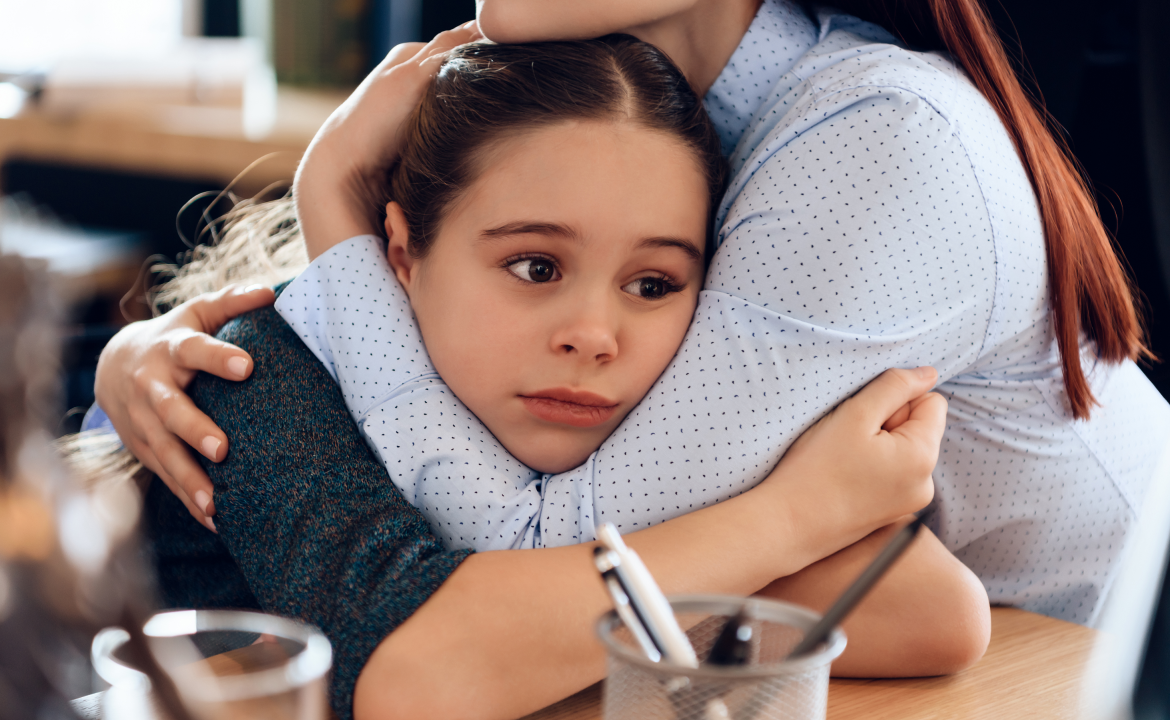About
This article provides a short overview of the child adoption process, from the legal issues presented in severing parental rights to the emotional dynamics of welcoming a child into a family through adoption.
We explore the evolving nature of adoption, from the traditional closed adoption model, which has been shrouded in secrecy, to the increasingly open arrangements. This shift reflects a growing understanding of the importance of a child’s identity formation and the potential benefits of maintaining some connection to their biological roots.
Also examined are differences between open and closed adoptions while exploring their potential advantages and challenges. For adopting parents, the goal is ts to make informed decisions that align with their values and the child’s best interests.
On the practical side, we examine some of the legal procedures involved in transferring parental rights, issuing new birth certificates, and navigating varying regulations across states. We also examine some of the complexities of interstate and international adoptions, highlighting the additional legal and logistical considerations that must be considered.
Financial considerations are often a significant concern for prospective parents. Here, we cover the costs associated with adoption, which can vary significantly depending on the type of adoption pursued.
Towards the end, we take a deep dive into some of the common misconceptions surrounding adoption, ranging from concerns about the emotional well-being of adopted children to the eligibility criteria of the prospective parents.
Finally, the article underscores the importance of seeking professional guidance throughout the adoption process. It suggests connecting with reputable adoption agencies, legal professionals specializing in adoption, and support networks for adoptive families.
Will my child know about her adoption?
In most states, no. If you adopt a child, they will not know who the birth parents are. However, some states allow children access to this information. Many states also allow biological parents and adopted children to register with the state and exchange information.
Do the birth parents have visitation rights if we adopt a child?
In most states, no, the birth parents don’t have any visitation rights if you are adopting their child because the identities of the birth parents and adoptive parents are not known to each other. Such visitation might be allowed in states where the two sets of parents know each other’s identities (known as “open adoption” states).
What happens to the child’s birth certificate if I adopt a child?
When you adopt a child, a new birth certificate is ordinarily issued, and the child’s last name is changed to that of the adoptive parents. The old birth certificate is sealed and usually is not available to anyone.
What are the basic rules for child adoption?
In family law, adoption is the legal procedure by which the “birth parent” (or parents) give up their child to “adoptive parents.”
Under the old adoption rules, once the adoption is final, the child no longer has a parent-child relationship with the birth parents but only with the adoptive parents. This is no longer the case.
Today, about one in eight couples is unable to have a baby. In modern adoption, the woman placing a child for adoption maintains 100% control over the process and creates a customized adoption plan. This includes choosing the family and selecting how many contacts she wants with the family before and after placement.
What is the Difference Between Open and Closed Adoption?
In child adoption, there are many options adoptive parent(s) can choose. Some women are not interested in knowing or choosing the adoptive parent(s). In contrast, other women insist on developing a relationship with the child’s adopted family.
Open Adoption
In an open adoption, there is at least the exchange of information between the woman placing her child for adoption and the adoptive parent(s).
Openness can mean various things. If everyone agrees, contact can be maintained following the birth and placement of the child.
Closed Adoption
A closed adoption means there is no contact between the mother placing her child for adoption and the adoptive parents.
Public and private agencies handle adoptions, which are sometimes done privately between the parties.
Usually, the adoptive parents are screened and evaluated, and the child’s placement is monitored for some time.
The process concludes with the approval of the adoption by the appropriate court. This approval formally terminates the birth parent-child relationship. It creates a new parent-child relationship based on the parties’ agreement with the adoptive parents.

How can I find out about what it’s like adopting a child?
You may contact a private adoption agency, a state-regulated adoption agency, or an attorney who handles adoption matters. You can also talk to friends who have adopted a child and have gone through the process.
Many online communities share their adoption experiences and can offer sound advice about their experiences and the adoption process.
Must I use an adoption agency to adopt a child?
Whether or not you have to use an adoption agency to adopt a child depends upon the law of your state. Some states prohibit the so-called “independent” or “private” adoption, an agreement only between the birth parents and the adoptive parents; other states allow such an adoption.
In any case, a judge must approve the adoption to be legally enforceable.
Some state agencies will generally investigate the adoptive parents and prepare a report for the judge who will make that decision.
What About State and International Adoptions?
Resources For Adoptions Between States
Statistic: The cost of adopting a child in the United States can range between $20,000 and $45,000, depending on various factors such as the adoption agency, legal fees, medical expenses, and other related costs. This range applies to domestic adoptions facilitated through adoption agencies or independent attorneys.
International Child Adoption
According to the Department of Human Services policy, U.S. citizens who want to adopt a child internationally must use either the Hague or the Orphan (non-Hague) process.
Under this policy, the child may immigrate immediately after the adoption to a foreign country or to the U.S. to be adopted here.
Trouble Tips
Is the Cost of Adoption Expensive?
Adopting a child is expensive primarily because of the lengthy process and the number of professionals that must be involved in the process. Professionals include attorneys, counselors, doctors, and adoption specialists.
According to Today.com, the Child Welfare Information Gateway from the U.S. Department of Health and Human Services reports that the cost of adopting a child in the United States ranges between $20,000 and $45,000.
If the child has been born, the adoptive parents will normally be responsible for all costs associated with the adoption. The agency or family law attorney will provide you with an estimate of the price in your situation.
Suppose the child has not yet been born when the process begins. In that case, the adoptive parents generally must provide for the costs of adopting a child and all reasonable pregnancy-related medical and living expenses of the birth mother. This can amount to several thousand dollars in an adoption search.
What if I can’t afford to adopt a child?
All states participate in a federal program that provides funds to assist people willing to adopt a child with “special needs,” sometimes making it difficult for an agency to place the child.
In addition, some states may help you financially even if the child does not have special needs. An attorney or agency in your state will know if this kind of financial assistance is available.
Will our income level determine our eligibility to adopt a child?
Whether to recommend allowing you to adopt a child, the agency will consider everything that may impact the best interests of the child, including the adoptive parent(s):
- Marital status
- Financial condition
- Sexual orientation
- Age and physical health
- Mental and emotional health
- Religious beliefs
Must I be married to adopt a child?
Whether or not you must be married to adopt a child will depend upon the law in your state. Some states permit adoption by married couples only.
Can Same-Sex Couples Adopt a Child?
According to the U.S. Census Bureau, almost fifteen percent of about 1 million same-sex couples in the United States had at least one child under 18 in their household.
The data also indicates that, of the 115,064 same-sex households with children, about 18,400 (16%) were raised at least one adopted child, with 11% of those households being gay male couples.
According to American Adoptions, adoption statistics suggest that more and more gay couples are adopting. In fact, according to many public advocacy groups, same-sex unions are almost four times more likely to already be raising an adopted child.
As of 2024, as the country moves further to the political right, public opinion toward expanding gay and lesbian rights appears to have slowed – as well as public support for same-sex couples to legally adopt children. In this regard, please note this article is written just days before the November 5, 2024, presidential elections, which can turn the tide significantly on these issues.
Notwithstanding, the American Academy of Pediatrics (AAP) now openly supports the legal right for same-sex couples to marry and adopt children have stated that the children’s well-being is affected far more by other factors, such as their parents’ health and economic security, than their particular sexual orientation.
According to the AAP, two parents work better than one parent, assuming they love each other and their child and have the economic and social security to support their child’s development.
The U.S. Supreme Court Move to the Right
Reversal On Privacy Rights
While the U.S. Supreme Court has already spoken on the issue by legalizing same-sex adoption in 2017, many states have remained silent on the issue.
With the 2022 Supreme Court decision in Dobbs v. Jackson Women’s Health Organization, the Court moved decisively to the extreme right by overturning the landmark case of Roe v. Wade. In doing so, the Court also called into question the constitutionality of same-sex marriage and, by extension, same-sex adoption.
Even though the Supreme Court’s Courts majority has moved decisively to the far right on abortion, the Pew Research polling shows that 61% of Americans still support same-sex marriage while 31% are against it.
Some Essential Points to Remember:
- Confidentiality Varies by State: In most states, the identities of birth and adoptive parents remain confidential, but open adoptions allow for some level of contact.
- No Visitation Rights for Birth Parents: Typically, birth parents do not have visitation rights post-adoption unless it’s an open adoption.
- New Birth Certificate Issued: Adopted children receive a new birth certificate with the adoptive parents’ names, and the original is sealed.
- Eligibility Factors: When assessing adoptive parents, factors like marital status, financial condition, and health are considered, though some factors, like race, are contentious.
Ten Common Misconceptions About Adopting A Child
Misconception 1: Adopted children are more likely to have serious emotional or behavioral problems than biological children.
Reality: While some adopted children may experience challenges related to their past experiences (e.g., neglect, abuse, multiple placements), research shows that the vast majority of adopted children develop normally and thrive in their adoptive families. Adoptive parents are provided with resources and support to address any specific needs their child may have. Furthermore, many children placed for adoption are infants or very young, minimizing the impact of early trauma.
Misconception 2: Adoption is extremely expensive, making it inaccessible for many people.
Reality: The cost of adoption varies greatly depending on the type (e.g., domestic infant adoption, international adoption, and foster care adoption). Foster care adoption is often low-cost or free. Grants, loans, and employer-provided adoption assistance programs can help offset costs. While some types of adoption can be expensive, there are affordable options available.
Misconception 3: It’s very difficult to adopt a healthy infant.
Reality: While the wait times for a healthy infant can vary depending on the agency and the adoptive parents’ openness to different characteristics (e.g., race, ethnicity), many healthy infants are adopted each year. Working with reputable agencies and being flexible can increase the likelihood of adopting a healthy infant.
Misconception 4: Single people and same-sex couples cannot adopt.
Reality: Single people and same-sex couples are eligible to adopt in most countries and regions. Adoption laws and practices are increasingly inclusive of diverse family structures.
Misconception 5: The adoption process is long and complicated, filled with bureaucratic hurdles.
Reality: While the adoption process involves paperwork, background checks, and home studies, it is designed to ensure the child’s safety and well-being. Reputable agencies guide prospective parents through each step. The length of the process can vary, but it is generally manageable with proper preparation and support.
Misconception 6: Birth parents can easily reclaim their child after the adoption is finalized.
Reality: Once an adoption is legally finalized, it is very difficult for birth parents to reclaim their child. Laws are in place to protect the adoptive family and the child’s stability. In some cases, open adoptions may allow for ongoing contact between the adoptive family and birth parents, but this is agreed upon beforehand and does not threaten the legal permanence of the adoption.
Misconception 7: Adopted children are not “real” members of the family.
Reality: Adopted children are legally and emotionally full members of their adoptive families. The parent-child bond is built on love, commitment, and shared experiences, not solely on biological ties.
Misconception 8: You have to be wealthy to adopt.
Reality: While financial stability is important, you need not be wealthy to adopt. Adoption agencies assess a family’s overall capacity to provide a stable and nurturing home, not just their financial resources. As mentioned earlier, lower-cost adoption options are available.
Misconception 9: Open adoptions are confusing and disruptive for the child.
Reality: Research suggests that open adoptions can benefit adopted children when handled appropriately. Knowing about their birth family and having some level of contact can help them develop a stronger sense of identity and reduce feelings of loss or abandonment.
Misconception 10: Adopted children will always feel resentful towards their adoptive parents for not being their “real” parents.
Reality: While some adopted children may experience feelings of loss or grief related to their adoption, this does not mean they resent their adoptive parents. Adopting families can build strong and healthy relationships with love, support, and open communication. Many adopted children express deep gratitude and love for their adoptive parents.














